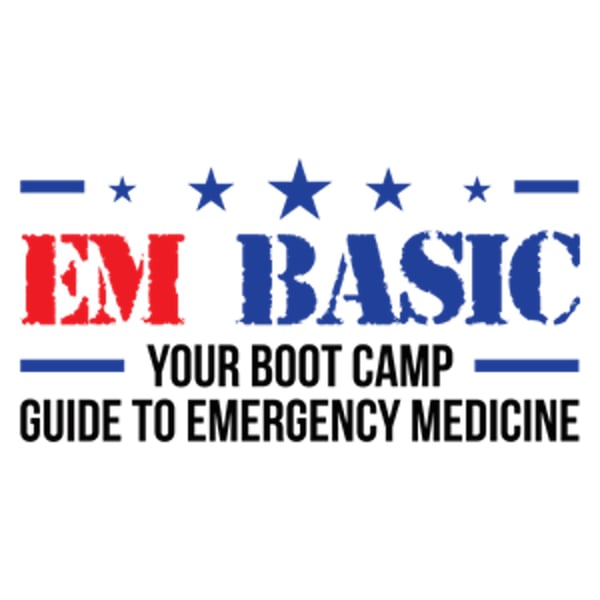95 Pediatric Respiratory Failure
EM Basic
EM Basic LLC
4.6 • 665 Ratings
🗓️ 31 August 2020
⏱️ 34 minutes
🧾️ Download transcript
Summary
Dr. Renuka Mehta, a pediatric intensivist at the Medical College of Georgia, joins Drs Matthew Smith and Zac Hodges to discuss the fundamentals of respiratory failure.
What is the structure of the initial evaluation of a critically-ill child?
What is exactly is respiratory failure?
What is the role of non-invasive respiratory support in pediatric patients?
What are the indications for emergency intubation?
What are the general concepts that learners need to understand about invasive mechanical ventilation?
All of this and more from the Department of Pediatrics from the Medical College of Georgia.
Thanks to Dr. Smitha Mathew and Dr. Kathryn McLeod who also contributed to this discussion.
Please subscribe, rate and review.
Check out our website at https://www.augusta.edu/mcg/pediatrics/residency/podcast.php
Want further reading on this topic? Check out this Pediatrics in Review article on respiratory failure https://pedsinreview.aappublications.org/content/35/11/476
Transcript
Click on a timestamp to play from that location
| 0:00.0 | Hi everyone and welcome back to Ian Basic. I'm Zach Hodges, a pediatric hospitalist at the Medical College of Georgia. |
| 0:06.9 | Today I'm here with Dr. Matthew Smith, a third-year pediatric resident, and Dr. Renuka Meta, a pediatric |
| 0:12.2 | intensivist at the Children's Hospital of Georgia. Welcome. Thanks for inviting me to join this podcast. |
| 0:19.7 | Hey, Zach, glad to be here. |
| 0:21.5 | On today's episode, we will discuss an approach to the critically ill pediatric patient |
| 0:25.6 | and we'll finish up with some points on respiratory failure. |
| 0:28.6 | We hope to review the fundamentals and include some clinical pearls that may be helpful for |
| 0:32.6 | our learners next time they rotate through the emergency department or the ICU. |
| 0:36.8 | Matthew, do you want to get us started with a case? |
| 0:39.0 | Yeah, sure. |
| 0:39.7 | So, our patient is a 16-year-old girl with one week of upper respiratory symptoms |
| 0:44.7 | who presents to the emergency department due to 24 hours of worsening shortness of breath and worsening fever. |
| 0:51.5 | Upon arrival to the ED, she is very ticepptych, and is only able to speak in one to two |
| 0:56.9 | words sentences. Dr. Meta, how would you begin to evaluate this patient? |
| 1:02.2 | It's important that we have a systematic approach to curing for critically ill patients. |
| 1:09.1 | This typically includes the initial pediatric assessment triangle, |
| 1:13.5 | followed by a primary and secondary assessment. So tell us more about the pediatric assessment triangle. |
| 1:20.5 | The pediatric assessment triangle is our initial visual assessment from the door when we first see |
| 1:26.7 | a patient. This is a rapid evaluation tool that |
| 1:30.7 | establishes a child's clinical status and directs initial management priorities. It uses the acronym |
| 1:38.6 | ABC. A stands for appearance. Is the patient well appearing or is in distress? Are they alert or lethargic? Are they irritable? And if so, are they able to be consoled? And finally, is their speech appropriate for their development? |
| 1:58.4 | Next is B for work of breathing. |
... |
Please login to see the full transcript.
Disclaimer: The podcast and artwork embedded on this page are from EM Basic LLC, and are the property of its owner and not affiliated with or endorsed by Tapesearch.
Generated transcripts are the property of EM Basic LLC and are distributed freely under the Fair Use doctrine. Transcripts generated by Tapesearch are not guaranteed to be accurate.
Copyright © Tapesearch 2025.

